This post may include affiliate links.
If you make a purchase, I'll earn a small fee at no extra cost to you.
Green onions or scallions are easy to grow in containers or in your garden. They’re used as a garnish and to add mild onion flavor to many dishes. You can grow them from seed, or from green onions bought at the grocery store. Here’s everything you need to know about growing green onions.
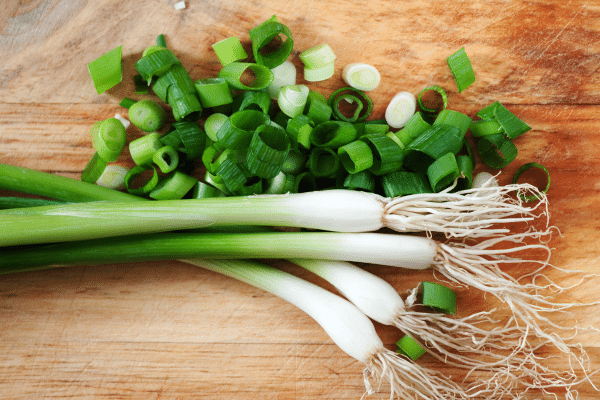
We use scallions all the time at our house. They’re delicious in salads, Loaded Fried Rice, Homemade Orange Chicken, on baked potatoes, or many other recipes. But buying them every week at the store can really add up.
It’s easy to grow green onions from seed, or by propagating onions bought at the store. Once you’ve started growing green onions, you can let a few continue to grow and harvest the seeds. Then you’ll have an Endless Onion Empire! (See also: Growing an Endless Supply of Basil.)
Growing Green Onions: Quick Start Guide
| Common name(s) | Green Onions, Scallions |
| Scientific name | Allium fistulosum |
| Sun | Full sun |
| Water | Frequent |
| Soil | Well-drained, fertile |
| Hardiness | Warm season perennial; US zones 6-9 |
| Fertilizer | Every 2 weeks |
| Container size | 1 gallon or larger |
| Pests | Aphids, slugs/snails |
| Days to harvest | 60 days |
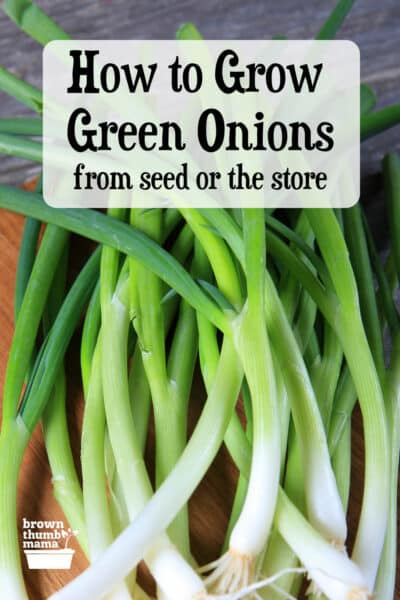
Important Garden Note: green onions are different from bulbing onions. Bulb onions (Allium cepa) are the white, yellow or red onions at the grocery store. Before harvest, they have green leafy tops. You can harvest these green stems, but then the plant may not form a bulb.
Green onions (Allium fistulosum), are also called scallions, bunching onions, Welsh onions, Japanese bunching onions, or spring onions. These are perennials in Zones 6-9 and don’t form a bulb.
You can grow green onions in containers or directly in the garden. I like to grow them in containers, succession planting a new batch every month or so. That way I always have a crop of green onions that are ready to harvest.
Growing Green Onions from Seed
Green onions are easy to grow from seed, because you don’t have to be super-precise about spacing or placement. I like to mix a bit of EB Stone Sure Start into the soil, sprinkle the seeds on top, and cover lightly with potting soil.
Keep the soil moist until the seeds sprout–they’ll look like tiny green hairs. They’ll be ready to start harvesting in about 2 months–snip off the green part above the soil level and they will continue to grow!
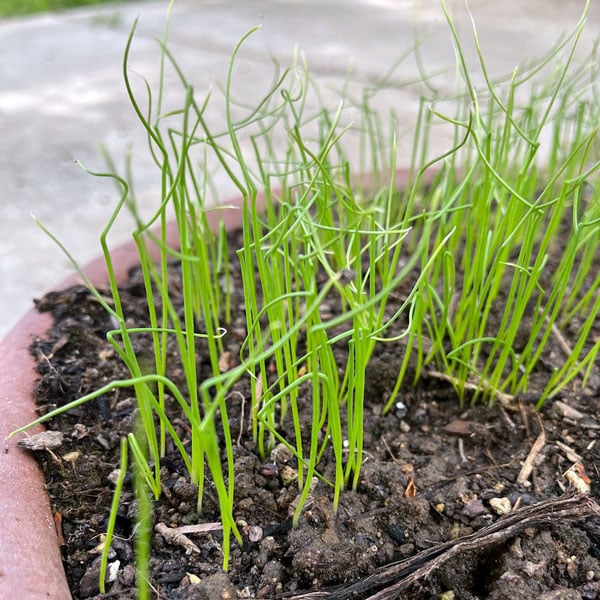
Growing Green Onions from Store-Bought
Green onions grow really well from cuttings or scraps, and you can do this any time of year. Buy green onions at the store and cut off all the green parts, leaving the bottom white part and roots intact.
Sit the white parts into a shallow container with a bit of water until they start to sprout. This will only take a day or two. Once the green parts have started to grow, plant them in a pot or the garden with the green part buried and the top sticking out.
They will grow over time, and you can harvest as needed or leave them to grow (I usually do a little bit of both).
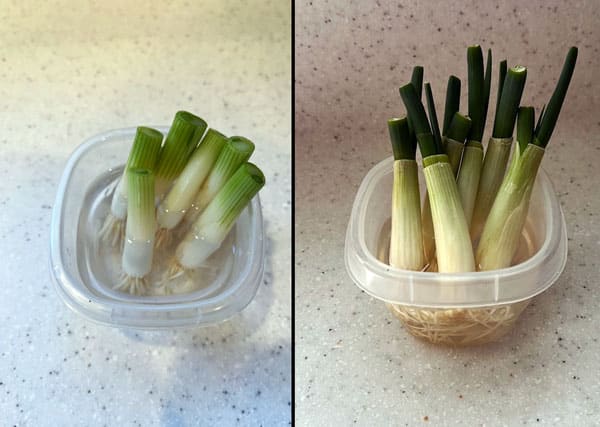
Sun, Water, Soil
Scallions grow best in full sun. This means they need between 6-8 hours of direct sunlight each day, without any shade. If they get more sun than that, great! If they get less than 6 hours, they’ll grow more slowly and will take longer to mature.
Newly-planted green onion seeds need to be gently watered once or twice a day; mature plants may only need to be watered every few days.
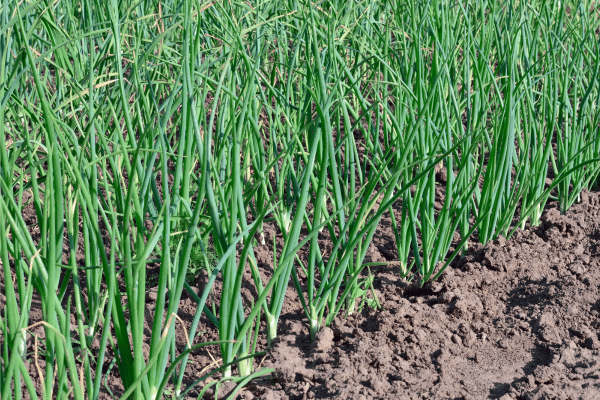
Stick your finger or a wooden chopstick at least two inches into the soil—if the soil feels damp or sticks to your finger, there’s enough moisture. If your finger comes up dry with no soil sticking to it, it’s time to water.
Grow scallions in well-drained, fertile soil with added compost or worm castings to provide extra nutrients. I recommend making your own compost to enrich your garden soil and reduce kitchen waste.
Fertilizer
Because green onions are ready to harvest in just a couple of months, there’s not a lot of time to fertilize!
Dilute a bit of EB Stone Fish Emulsion with Kelp in your watering can and gently water/fertilize every couple of weeks. The extra nitrogen in this fertilizer helps encourage leaf growth, which is what we want in green onions.
Pests & Diseases
Thankfully, there aren’t many pests that bother scallions. The ones I see the most are aphids, snails, and slugs. Here are tips on how to eliminate aphids naturally and how to prevent snails and slugs naturally.
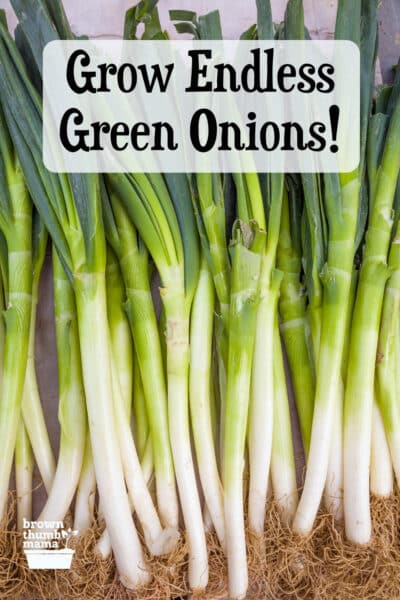
Companion Plants
What’s a companion plant? Well, just like people, some plants get along better with others. Companion plants are plants that help other plants grow better, or keep pests away. There are some plants that shouldn’t be planted together, because they’ll prevent good growth.
Green onions grow well with brassicas like broccoli, cauliflower, cabbage, kale, and brussels sprouts. You can even plant them near strawberries and lettuce to help prevent aphids.
Conversely, don’t plant scallions near beans, peas, asparagus, or sage. The scallions can inhibit the other plants’ growth and/or prevent them from getting enough nutrients.
Learn lots more about companion planting with the great book, Plant Partners: Science-Based Companion Planting Strategies for the Vegetable Garden.
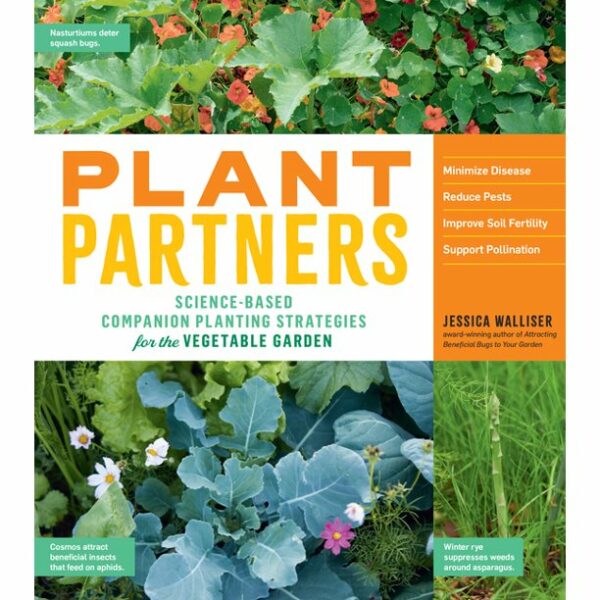
Harvesting
When your green onions are about the thickness of a pencil, they’re ready to harvest. You can either pull up the entire plant, or just trim off the green part and leave the rest in the ground. If you trim off the green part, it will regrow and you can continue to harvest again and again.
I usually allow some of the green onion plants to mature and go to seed. The onion plants make huge flower globes, and each one can produce hundreds of seeds. When the seeds are black and easily shake out of the flower, they’re ready.
Tap the flower globe over a bowl and let the seeds fall inside. Store them in a cool, dry place until you’re ready to plant your next batch of green onions. (Follow me on Instagram for more fun videos like this!)


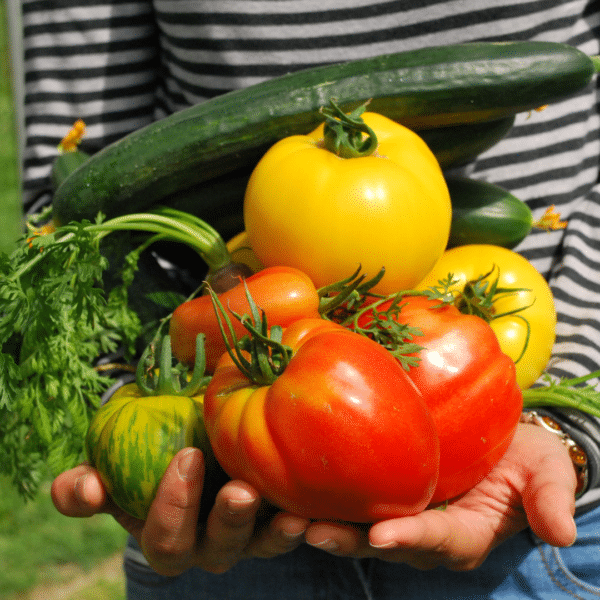
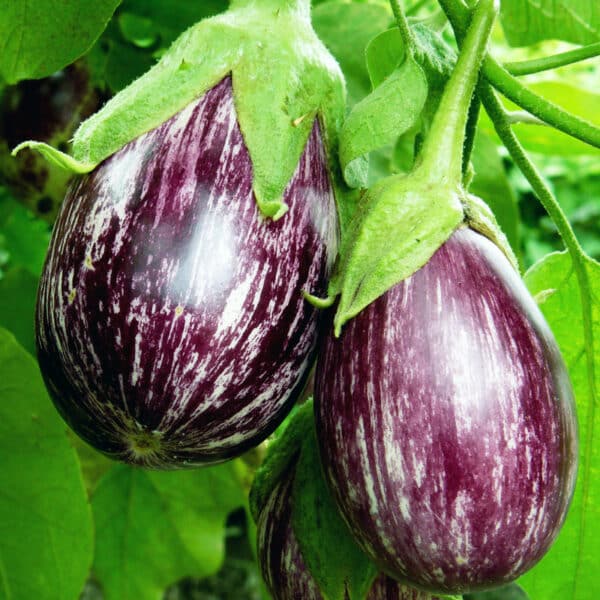
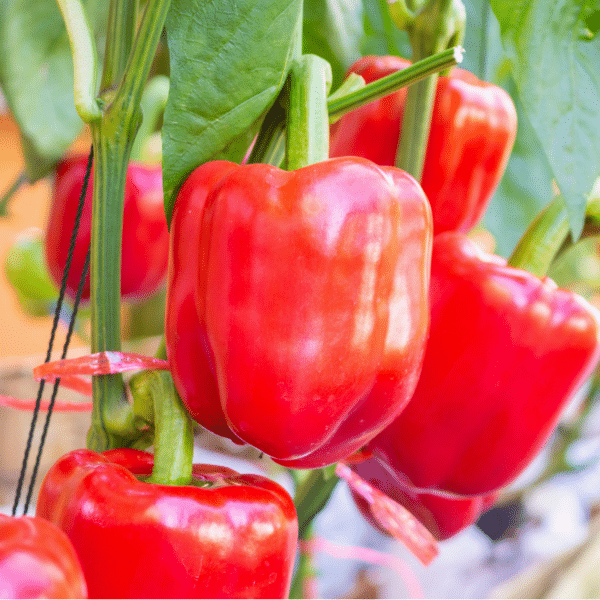
Is this an american thing, to NOT eat the white part or bulb end ? Which over here in North Wales is considered the very best part of a spring onion. I don’t know anyone who only eats the green parts in Britain, yet on pinterest it seems all americans leave it.
is there a way to print this information without the ads and sections cut out from as spaces?